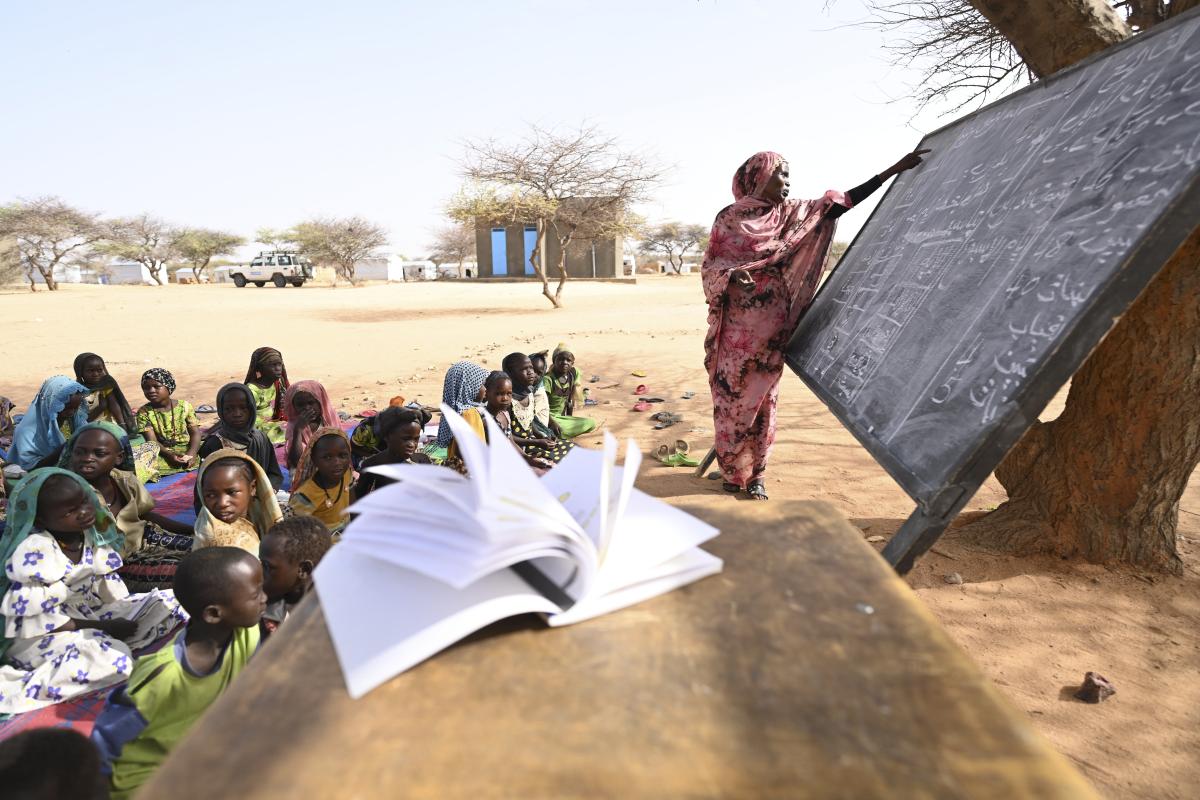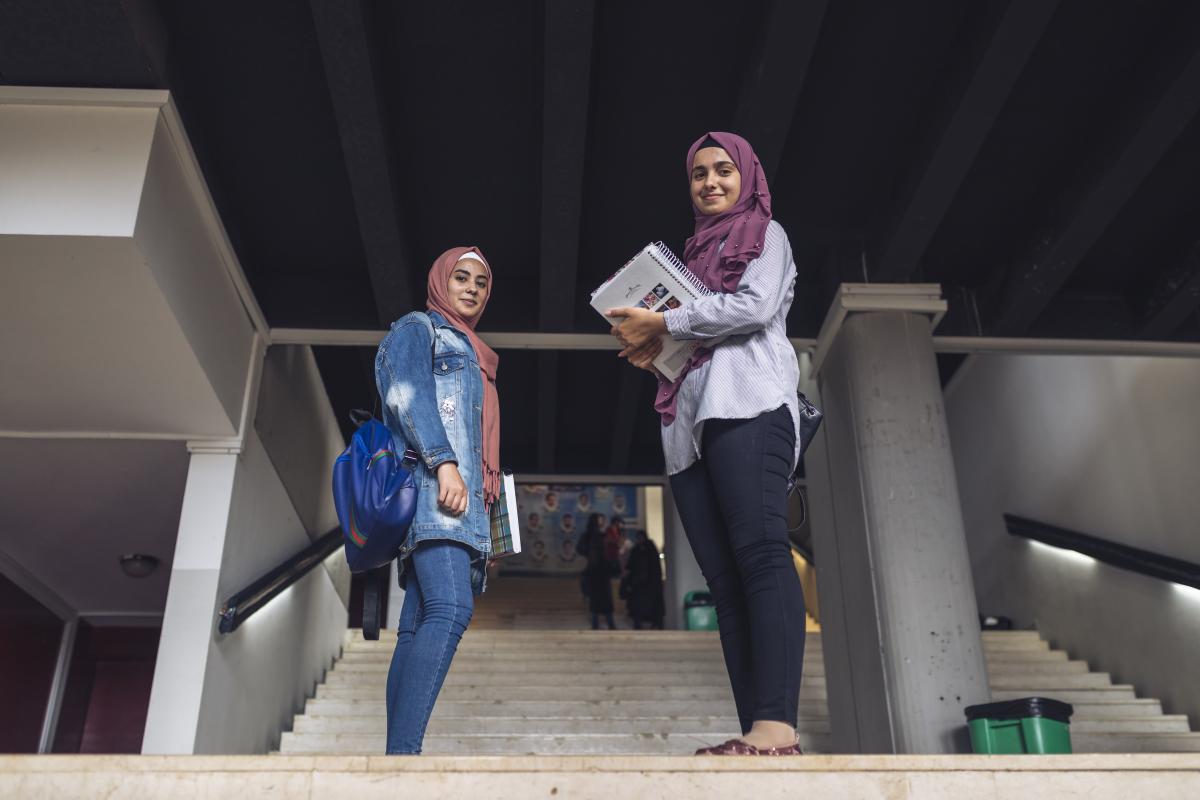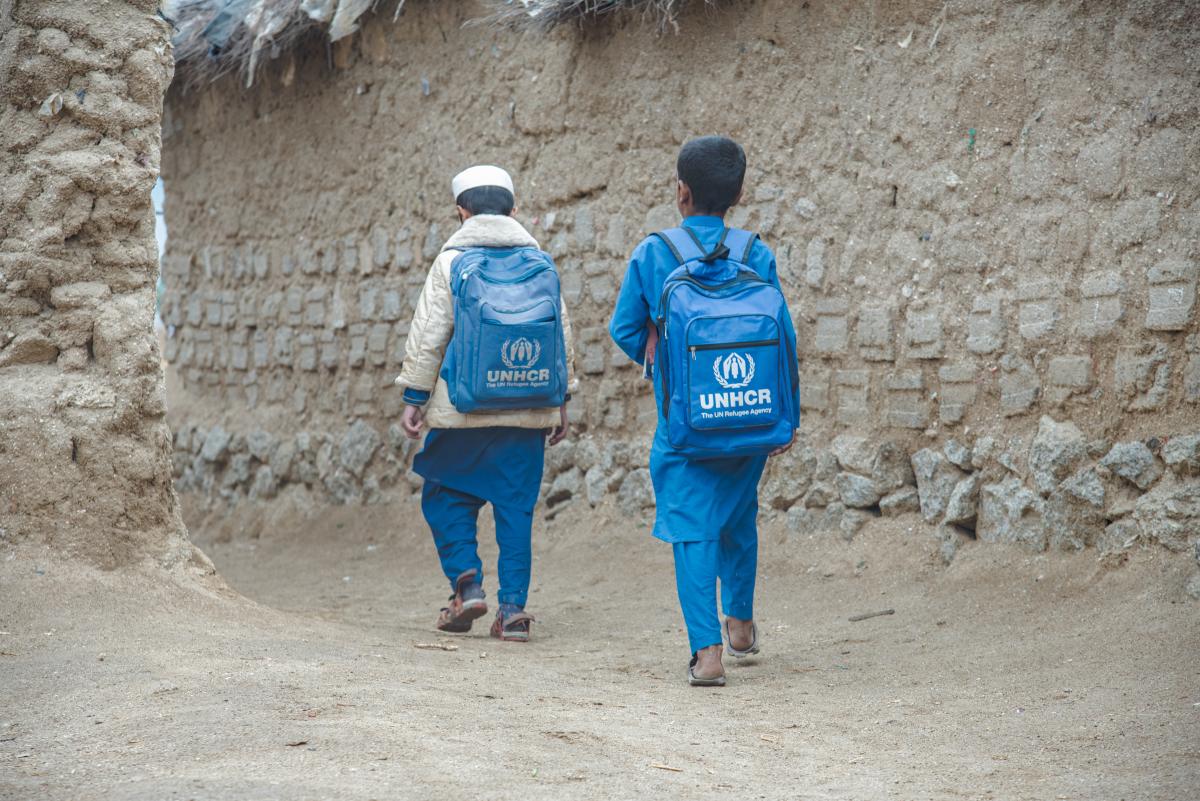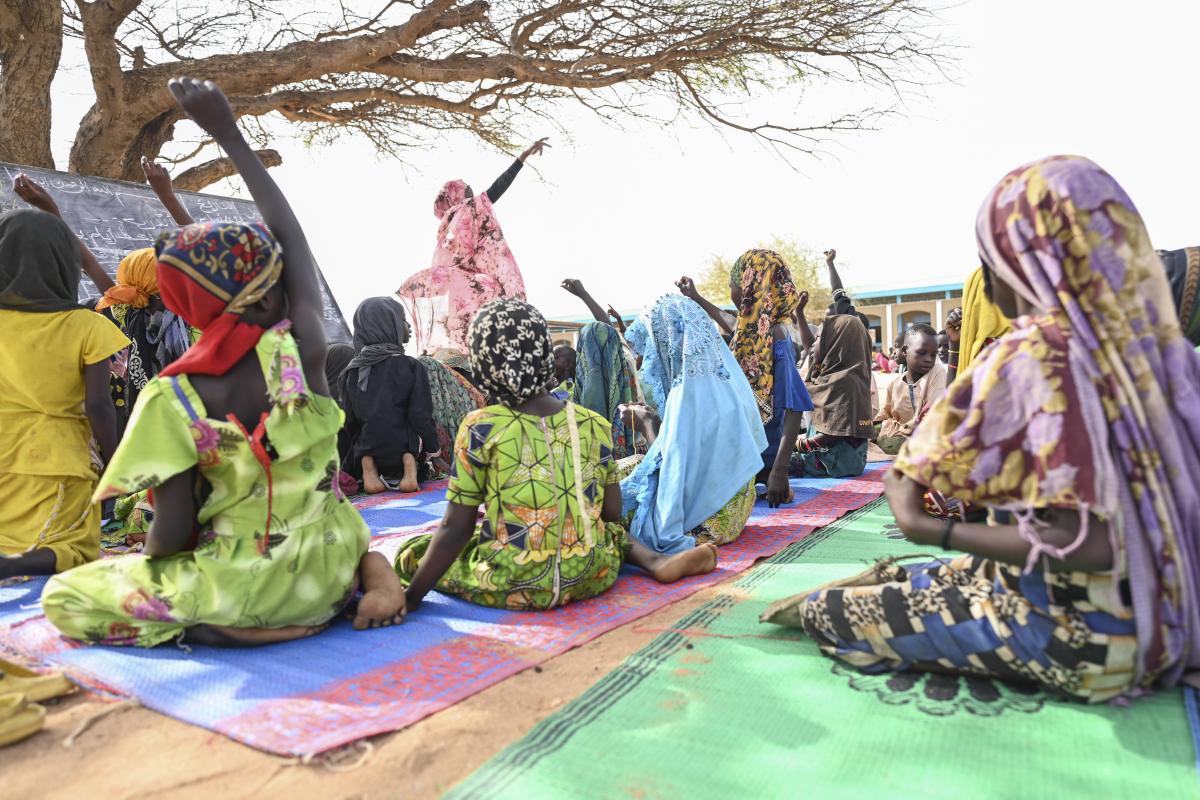The 2022 UNHCR Education Report – All inclusive: The Campaign for Refugee Education brings to light the path of more than 10 million children around the world who, due to violence, conflict or persecution, were forced to flee their country. After going through life- threatening situations and finally reaching safety, education becomes hardly accessible for many of them.
Once access to education is lost it is hard to reclaim it.
While travelling around the world to see the impact of humanitarian emergencies, UNHCR high commissioner, Filippo Grandi, witnessed first-hand the challenges affecting millions of children. It is safe to say that young refugees are still very far from a complete participation in their right to education.
I have met many young refugees who had been attending school or university, acquiring fresh knowledge and skills, seeing friends, revising for exams – in short, preparing for their futures. All it took was one day, one moment when their lives were in danger, for all that to be taken away.

They do not lack enthusiasm to learn, they have dreams and are thirsty for knowledge. As a matter of fact, an increasing amount of them want to continue learning after secondary level. What causes issue is the insufficiency of access to infrastructures, qualified teachers and school supplies. To ensure an appropriate education system they would need a full cycle within an official education system and not a few hours of lessons in a temporary facility.
Data from more than 40 countries drawn from the UNHCR country operations that refers to the 2020-2021 academic year, as well as latest available data on enrolment and out-of-school children and youth from the UNESCO Institute for Statistics (UIS) has permitted to depict the situation related to refugee education. Refugee children and youth fall behind their non-refugee peers regarding access to quality education.
The average gross enrolment rates at primary level stood at 68 per cent, almost unchanged from the previous year. For secondary education, however, the rate is significantly lower at 37 per cent. At pre-primary level, the enrolment rate was 42 per cent. Enrolment at tertiary level has risen to 6 per cent. While this is well below global levels, particularly in wealthier countries, this is still a considerable improvement on recent years, when refugee enrolment at the tertiary level stood as low as 1 per cent. UNHCR continues to work towards 15 per cent enrolment of young refugees in tertiary education by 2030 (the 15by30 target), with the DAFI programme.

Despite their difficulties to access education, when it is facilitated, their academic results are very successful. In fact, 74 per cent of the primary-level student have passed national tests while the results for lower and upper secondary were 65 per cent. Having said that, the number of refugees taking national tests is considerably low and these numbers are derived from a sample of a few hundred students or less each time. In Cameroon for example, a pass rate of 74% at lower secondary level is based on a mere 154 refugee students sitting the exams.
Building more inclusive education systems
Most of the classes taking place in refugee camps are often overcrowded, which is not optimal for effective teaching and makes it challenging for children with difficulties.
In Burkina Faso, there were 40 national learners to every teacher, but for refugees that rose to 60:1. In Zimbabwe, the ratio for nationals was 36:1 but for refugees it was 59:1.
With some external support, Host-countries could address the problematic of high demand for education and insufficient capacity by encouraging refugee students’ enrolment in their local schools, thus promoting a more inclusive education system. These students would benefit from teachers certified by the host country national education system, appropriate supplies and a suitable infrastructure. It can already be observed in Mexico, for example, where a Comprehensive Regional Protection and Solutions (MIRPS) was adopted in order to strengthen national schools and boost inclusion in refugee-hosting communities. Another solution is to train refugee teachers on the host-country curriculum. In Chad, refugee teachers are included in national teacher trainings, coaching initiatives, and have access to training centres. In 2022, for instance, following a new refugee influx from Cameroon, over 60 Cameroonian primary school teachers were trained on the Chadian curriculum. Although a lot of efforts still need to be done, the future looks promising – An increasing number of countries are taking great measures, encouraging more refugee students to attain tertiary level studies which will subsequently contribute towards the 15by30 initiative.

Many inspiring stories
There are a great number of young refugees who have succeeded, and Mary Maker is one of them. She is a good example of determination and went against all obstacles to become an inspiration for refugee children. Mary fled South Sudan as a child and grew up in Kakuma refugee camp in Kenya. For her father education was always a priority, he used to tell her ‘’ Education is your first husband ‘’. She was enrolled in a boarding school outside Kakuma, however, after her father passed away, her family lacked money and couldn’t pay for her school anymore. Therefore, she was always on her principal’s list and was often escorted out of school and sent home along with her fellow ‘’non-payees’’. What Mary viewed as the walk of shame, was more bearable than having to stay home and renounce her education. For four years she walked around schools, begging teachers to allow her to retake her exams, a situation which eventually set her up for failure. Despite all the hardships, perseverance paid for Mary when in 2018 she successfully applied to a study program in Rwanda with a possibility of scholarship in a US university. Today, she is studying at Olaf University in Minnesota, and thinks back on her journey with emotion. Mary Maker is a UNHCR High-profile supporter co-founded the Elimisha Kakuma educational project for refugee students and strives to pull other young people up the ladder with her.

“Education is the most powerful weapon which you can use to change the world.”
Formula 1 champion Sir Lewis Hamilton stands strongly behind this matter too and is proud to lend his voice to the education inclusivity campaign for refugee children and youth.
He founded ‘’The Hamilton Commission’’ in partnership with the Royal Academy of Engineering. It is a research project that highlighted the challenges of the motorsport industry, but it also identified several persistent barriers within education. Having himself experienced problems at school related to his origins, he was surprised to see that the same issues are still affecting marginalised young people’s access to, and inclusion within, education today. The report raised questions about fairness and the opportunity given to disadvantaged students. It also highlighted the lack of diversity and urgency to tackle the inequality affecting these students.
The list of barriers is a long one. Not only are there practical issues such as a lack of schools, qualified teachers, learning materials or computers. Refugees also face the challenges that come with being displaced – language barriers, separation from their support networks of friends and family, prolonged absence from the classroom, discrimination and alienation...
To learn more about UNHCR’s education programs, visit: